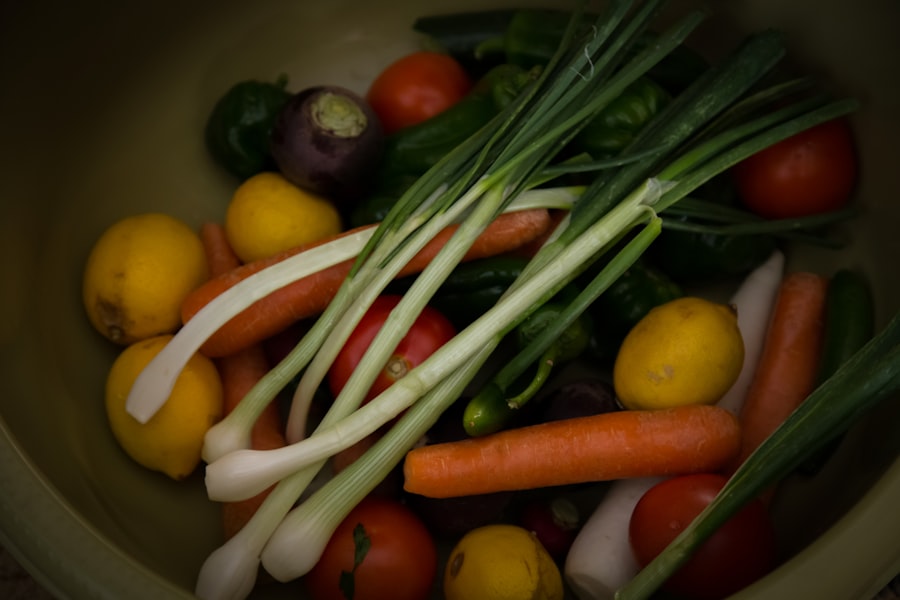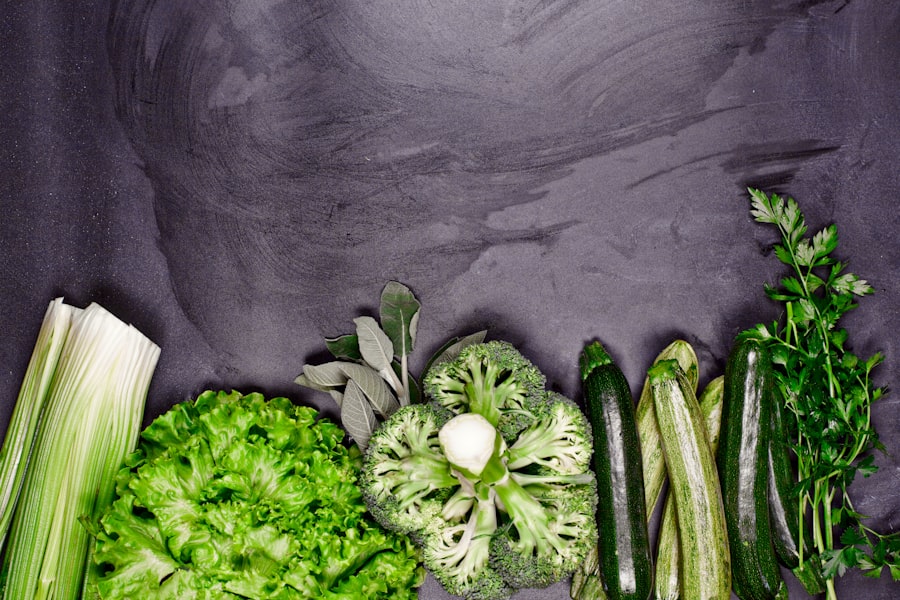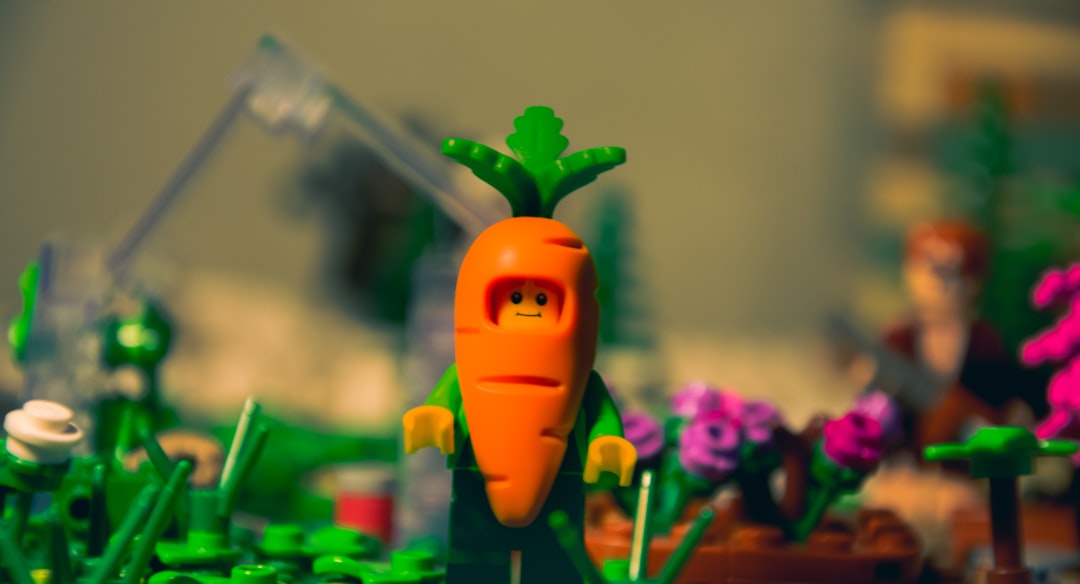Nightshade vegetables belong to the Solanaceae family, a diverse group of plants that includes not only edible varieties but also some that are toxic. You may be familiar with the term “nightshade” in relation to certain plants, but it encompasses a wide range of vegetables that are staples in many diets around the world. These vegetables thrive in various climates and are known for their vibrant colors and rich flavors.
The most common nightshades include tomatoes, potatoes, eggplants, and bell peppers, among others. The name “nightshade” is derived from the fact that some of these plants can grow in shady areas, but it also hints at their historical association with both culinary delights and potential toxicity. While many people enjoy these vegetables without any adverse effects, others may experience discomfort or health issues when consuming them.
Understanding what nightshade vegetables are and how they might affect your health is essential for making informed dietary choices.
Key Takeaways
- Nightshade vegetables belong to the Solanaceae family and include tomatoes, potatoes, peppers, and eggplants.
- Some people believe that nightshade vegetables can exacerbate joint pain and inflammation in conditions like arthritis.
- Nightshade vegetables contain solanine, a compound that may contribute to joint pain and inflammation in some individuals.
- If you suspect that nightshade vegetables are aggravating your joint pain, consider eliminating them from your diet and monitoring your symptoms.
- Consult a healthcare professional for personalized advice on managing joint pain while consuming nightshade vegetables and alternative vegetable options.
Common Nightshade Vegetables
As you explore the world of nightshade vegetables, you will likely encounter several familiar names. Tomatoes are perhaps the most popular nightshade, celebrated for their versatility in salads, sauces, and countless dishes. Their juicy texture and tangy flavor make them a favorite among many home cooks.
Potatoes, another staple, come in various forms—mashed, baked, or fried—and are a comfort food for many. Eggplants, with their unique texture and ability to absorb flavors, are often used in Mediterranean and Asian cuisines. Bell peppers, available in a rainbow of colors, add crunch and sweetness to salads and stir-fries.
In addition to these well-known varieties, there are other nightshades that you might not be as familiar with. For instance, tomatillos are often used in Mexican cuisine and have a tart flavor that complements salsas. Goji berries, while not a vegetable in the traditional sense, are also part of the nightshade family and are celebrated for their health benefits.
As you consider incorporating or reducing these vegetables in your diet, it’s important to recognize their prevalence and versatility in various culinary traditions.
The Link Between Nightshade Vegetables and Joint Pain

The relationship between nightshade vegetables and joint pain has been a topic of discussion among health enthusiasts and medical professionals alike. Some individuals report experiencing increased joint discomfort after consuming these vegetables, leading to speculation about their potential role in inflammatory conditions. While scientific evidence on this topic is still evolving, anecdotal reports suggest that certain compounds found in nightshades may contribute to joint pain for some people.
You may wonder why nightshades could be linked to joint pain. One theory posits that alkaloids present in these vegetables might trigger inflammatory responses in susceptible individuals. This connection has led some people to eliminate nightshades from their diets in an effort to alleviate symptoms associated with conditions like arthritis or general joint discomfort.
However, it’s essential to approach this topic with an open mind and consider both personal experiences and scientific research before making dietary changes.
How Nightshade Vegetables Can Aggravate Joint Pain
| Nightshade Vegetable | Effect on Joint Pain |
|---|---|
| Tomatoes | Contain solanine, which may contribute to inflammation and joint pain |
| Potatoes | High in glycoalkaloids, which may worsen joint pain for some individuals |
| Peppers | Contain capsaicin, which can trigger pain and inflammation in some people |
| Eggplants | Contain solanine, which may exacerbate joint pain and inflammation |
If you find yourself experiencing joint pain after consuming nightshade vegetables, it may be due to specific compounds that can aggravate inflammation. Alkaloids such as solanine and capsaicin are naturally occurring substances found in these plants. While they serve various functions within the plant itself—such as deterring pests—they can also interact with your body in ways that may exacerbate existing conditions.
For some individuals, the consumption of nightshades can lead to increased sensitivity or inflammation in the joints. This reaction can manifest as swelling, stiffness, or discomfort, particularly for those already dealing with conditions like osteoarthritis or rheumatoid arthritis. If you notice a pattern of joint pain following the consumption of nightshades, it may be worth considering an elimination diet to assess whether these vegetables are contributing to your symptoms.
The Role of Solanine in Nightshade Vegetables
Solanine is one of the key alkaloids found in nightshade vegetables, particularly in potatoes and eggplants. This compound serves as a natural defense mechanism for the plant against pests and diseases. While solanine is generally safe to consume in small amounts, excessive intake can lead to toxicity and adverse health effects.
In some individuals, even moderate consumption may trigger unwanted reactions, including digestive issues or joint pain. Understanding solanine’s role can help you make informed choices about your diet. If you suspect that solanine might be affecting your health, consider monitoring your intake of nightshade vegetables closely.
Cooking methods can also influence solanine levels; for example, green potatoes contain higher concentrations of this alkaloid and should be avoided. By being mindful of solanine-rich foods, you can better manage your overall well-being.
Nightshade Vegetables and Inflammation

Inflammation is a natural response by your body to injury or infection; however, chronic inflammation can lead to various health issues, including joint pain and autoimmune disorders. Some studies suggest that certain compounds found in nightshade vegetables may contribute to inflammatory processes in susceptible individuals. This connection has led many to question whether eliminating these foods from their diets could help reduce inflammation.
If you experience chronic inflammation or joint pain, it may be beneficial to pay attention to how your body reacts after consuming nightshades. While not everyone will have an adverse reaction, those who do may find relief by reducing or eliminating these foods from their meals. Keeping a food diary can help you track your symptoms and identify any patterns related to your consumption of nightshade vegetables.
Nightshade Vegetables and Arthritis
Arthritis is a common condition characterized by inflammation of the joints, leading to pain and stiffness. Many individuals with arthritis report varying degrees of sensitivity to nightshade vegetables. While scientific research on this topic is limited, anecdotal evidence suggests that some people experience exacerbated symptoms after consuming these foods.
If you have arthritis or similar joint issues, it’s essential to listen to your body and observe how it responds to different foods. You might consider consulting with a healthcare professional or nutritionist who can guide you through an elimination diet tailored to your needs. By identifying potential triggers like nightshades, you can take proactive steps toward managing your arthritis symptoms more effectively.
Identifying Nightshade Vegetables in Your Diet
Identifying nightshade vegetables in your diet is crucial if you suspect they may be contributing to your joint pain or inflammation. Start by familiarizing yourself with the most common varieties: tomatoes, potatoes, eggplants, bell peppers, and hot peppers are all part of this family. However, don’t overlook less common options like goji berries or tomatillos that may also be present in your meals.
Once you have a clear understanding of which foods belong to the nightshade family, take stock of your current eating habits. Review ingredient lists on packaged foods as well; many sauces and condiments contain tomato or pepper derivatives that could impact your health if you’re sensitive to nightshades. By being vigilant about what you consume, you can make more informed choices regarding your diet.
Managing Joint Pain While Consuming Nightshade Vegetables
If you enjoy nightshade vegetables but find they sometimes aggravate your joint pain, there are strategies you can employ to manage your symptoms while still indulging in these foods. One approach is moderation; rather than eliminating them entirely from your diet, consider reducing portion sizes or frequency of consumption. This way, you can still enjoy their flavors without overwhelming your system.
In addition to moderation, incorporating anti-inflammatory foods into your meals can help counteract any potential negative effects from nightshades. Foods rich in omega-3 fatty acids—such as fatty fish, flaxseeds, and walnuts—can help reduce inflammation throughout the body. Pairing nightshades with these beneficial foods may allow you to enjoy their taste while minimizing discomfort.
Alternative Vegetables to Consider
If you find that nightshade vegetables consistently cause discomfort or exacerbate joint pain, exploring alternative vegetables can provide variety without the associated risks.
Cruciferous vegetables such as broccoli and cauliflower also offer anti-inflammatory benefits while being versatile additions to meals.
Root vegetables like carrots and sweet potatoes can serve as satisfying substitutes for potatoes without the potential drawbacks associated with nightshades. Additionally, squashes such as zucchini or butternut squash provide a delightful texture and flavor profile while being gentle on sensitive systems. By diversifying your vegetable intake with alternatives, you can maintain a balanced diet while avoiding potential triggers.
Consultation with a Healthcare Professional
Before making significant changes to your diet—especially if you’re considering eliminating entire food groups—it’s wise to consult with a healthcare professional or registered dietitian. They can provide personalized guidance based on your health history and specific needs. A professional can help you navigate the complexities of food sensitivities while ensuring you’re still meeting your nutritional requirements.
In addition to dietary advice, healthcare professionals can assist in identifying underlying conditions that may be contributing to your joint pain or inflammation. They may recommend tests or assessments that provide further insight into how different foods affect your body. By working collaboratively with a healthcare provider, you can develop a comprehensive plan for managing your health while enjoying the foods you love.
In conclusion, understanding nightshade vegetables and their potential impact on joint pain is essential for making informed dietary choices. By recognizing common varieties, exploring their effects on inflammation and arthritis, and considering alternatives when necessary, you can take proactive steps toward better health while still enjoying a diverse range of foods.
Nightshade vegetables, such as tomatoes, potatoes, and eggplants, have been a topic of discussion in relation to joint pain and inflammation. Some individuals report experiencing increased joint discomfort after consuming these vegetables, although scientific evidence on this connection remains inconclusive.
You can read more about it by visiting this related article.
Over 60? Ditch THIS Sneaky Veggie Wrecking Digestion, Bloating, and Microbiome Balance.
FAQs
What are nightshade vegetables?
Nightshade vegetables are a group of plants that belong to the Solanaceae family, which includes tomatoes, potatoes, eggplants, and peppers. These vegetables contain alkaloids, which are natural compounds that some people believe may contribute to joint pain and inflammation.
Do nightshade vegetables cause joint pain?
Some people believe that consuming nightshade vegetables can exacerbate joint pain and inflammation due to the alkaloids they contain. However, scientific evidence supporting this claim is limited and inconclusive. It is important to consult with a healthcare professional before making any significant dietary changes based on this belief.
Are there studies linking nightshade vegetables to joint pain?
While there have been some studies exploring the potential link between nightshade vegetables and joint pain, the results have been mixed and inconclusive. More research is needed to establish a clear connection between the consumption of nightshade vegetables and joint pain.
Should I avoid nightshade vegetables if I have joint pain?
If you have joint pain, it is important to consult with a healthcare professional before making any significant changes to your diet, including avoiding nightshade vegetables. While some individuals may experience relief from joint pain by eliminating nightshade vegetables from their diet, this approach may not be suitable for everyone.
What are alternative options to nightshade vegetables?
If you are looking to reduce your consumption of nightshade vegetables, there are plenty of alternative options available, such as leafy greens, cruciferous vegetables (e.g., broccoli, cauliflower), carrots, squash, and sweet potatoes. These alternatives can provide a variety of nutrients while potentially reducing your intake of nightshade vegetables.
